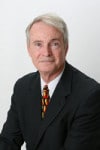Personal Injury Fire Cases

Brien Roche
Personal Injury Fire Cases Involving Cigarettes
Many household fires are caused by cigarettes. Everybody knows that cigarettes burn. Also that cigarettes can cause fires. There is data that indicates that makers of this product can and should produce cigarettes that are less fire prone. This chance of causing fires can be reduced through reduced density, smaller circumference and less porous paper. In addition shorter length, the absence of a filter tip and the absence of any burn additive to the paper will reduce the chance of fire.
Better Designs
An article from the National Institute of Standards and Technology states that makers have tested a self dousing product that is less likely to start fires.
A cigarette consists of a column of packed tobacco, a filter and then the paper wrapper. The column includes an additive which forms a slow burning coal to produce smoke. This in turn conveys nicotine to the smoker. The filter is made of a number of products which control the strength of the compounds in the smoke passed to the smoker. Likewise the paper enhances burning. However it can be made to slow that down.
In looking at a burn injury case against a cigarette maker, based upon a product defect theory, what needs to be proved is a design defect. In other words is there a design that would lessen the risk of injury. The data shows that such a product can be made. In looking at such a product design it may be helpful to research the U. S. Patent and Trademark Office to search patents and patent applications for such designs.
Call, or contact us for a free consult. For more information on burn injuries that may arise from cigarette fire cases see the page herein on burn injuries.See also the pages on Wikipedia for information on fire investigation.
Personal Injury Fire Cases Involving Faulty Alarms
Smoke alarm failure cases rise or fall based on the type of smoke alarm in use. The two most common types are photoelectric (photo)and ionization (ion). They are both triggered by smoke.
Ion Alarms
Ion alarms emit a beam of ions in a chamber. When the smoke enters the chamber the smoke obstructs the flow of ions. This causes a decrease of current and triggers the alarm. Ion alarms respond more quickly to small particles of smoke. A flaming fire produces small particles. Therefore the ion alarm better detects a flaming fire. Ion alarms cost less than the photo alarms. Ion alarms represent up to 95% of all alarms sold. However this alarm can take up to 30 minutes or longer to sound.
Photo Alarms
Photo alarms emit a beam of light into a chamber. When the smoke enters the chamber they block the beam and the alarm sounds. Photo alarms respond more quickly to larger particles such as those produced by a slower burning fire.
The time frame between the alarm sounding on a photo alarm and an ion alarm can be great. The photo alarms tend to give a quicker warning.
Smoke Alarm Failures-UL 217
Makers of the product defend ion alarms saying they are approved by Underwriters Laboratories. However what they do not tell you is that the UL Standard 217 was devised in the 1970s. At that time most homes had furniture made of cotton. Furniture in most homes today is made from oil based products that gives off a large amount of smoke. Most people who die in fires die of smoke inhalation. Therefore the UL standard 217 may not apply to home fires.
Makers of these products admit that smoke alarm failures most often consist of lack of response to smoke. Most complaints relate to this same issue. These types of complaints may be used at trial. To be used these complaints must precede the date of the fire. The things to look for in these complaints are whether they involved ion alarms, was your defendant the designer or maker and did the smoke reach the alarm. In addition was there any defect in the alarm, had the maker received notice of this defect before your fire and had the maker inspected the alarm and found no defect. Also did the alarms pass UL 217 and are the defects alleged in the other complaint the same as in your case.
Different facts surrounding the other complaints go to the weight of the evidence and not whether it can be used. Call, or contact us for a free consult.
Personal Injury Fire Cases Involving Faulty Alarm Design
In smoke alarm failures the best claim is a defect in design. All ion alarms have a defect in design because of the trouble they have in picking up smoke. Part of that defect is the failure to warn the buyer. That is the failure to warn that a smoke intense fire may not be sensed. This type of claim makes prior complaints of greater import. Most renters moving into a new place do not check smoke alarms. They do not have the package the alarm came in. The alarm has no warning on it. Hence all of this may be the basis for a failure to warn claim.
Details About The Alarms
You need to know where the alarms were located. Were there working batteries in the alarm? Were the people inside awake or asleep? Did the alarm sound?
Securing The Alarm
In any fire case the alarm must be obtained. Or at least its security be maintained. You must also learn who is doing any review of the alarm.
The thrust of any such case involving a smoke alarm is that a timely warning from a well designed alarm would have at least reduced the injury to something minor.
If you have been injured as a result of a failure of a smoke detector, contact us.
Also for more information about premises liability see the other pages on the site and about smoke alarms see the pages on Wikipedia.



